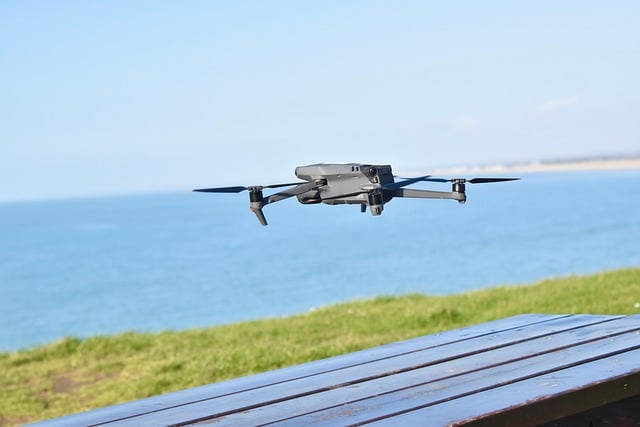The global market for counter-UAS (unmanned aircraft systems) – i.e. systems for detecting, defending against and neutralising unmanned aerial vehicles – is poised for massive growth. According to the latest analysis by market research company MarketsandMarkets, the market volume is expected to rise from around £6.64 billion (2025) to around £20.31 billion by 2030. This corresponds to an average annual growth rate (CAGR) of 25.1 per cent.
Growing threat from drones requires robust countermeasures
The increasing proliferation of commercial and military drones is creating new security risks worldwide. Armed forces and security agencies are responding by investing in adaptable, networked and resilient system architectures based on radar, radio frequency, EO/IR and communication sensors. The aim is to detect, track and neutralise unmanned aerial vehicles at an early stage – especially in the context of modern C4ISR and surveillance systems (Command, Control, Communications, Computers, Intelligence, Surveillance, Reconnaissance).
At the same time, international programmes for the modernisation of armed forces are promoting the introduction of mobile, electronic and laser-based defence solutions that work reliably even in environments with high electromagnetic interference.
Ground-based systems dominate the market
In terms of types of deployment, ground-based systems will continue to hold the largest market share in the coming years. They are used extensively at military bases, borders, airports and critical infrastructure. These systems combine radar, RF sensors, EO/IR cameras and jammers in a centralised architecture that can detect and combat drones in real time.
Their modular design – stationary, mobile or transportable – makes them ideal for the large-scale protection of sensitive areas. Advances in AI-based target detection and electronic warfare are also contributing to their increased performance.
High demand for long-range systems
The market segment for long-range solutions (> 50 km) is growing particularly strongly. These systems are designed for border protection, battlefield surveillance and early warning and use multi-layer sensor fusion, high-performance jammers and directed energy weapons (lasers, microwaves). The combination of early detection and direct engagement from a safe distance makes them a central component of modern air defence concepts.
North America as a growth driver
From a regional perspective, North America is experiencing the highest growth in the C-UAS market. This is driven by high defence budgets, ambitious homeland security programmes and the accelerated integration of AI-based defence systems. In particular, the US Department of Defence (DoD) and the Department of Homeland Security (DHS) are investing heavily in multi-layered anti-drone architectures for base and airport security and border surveillance.
Frequent drone incidents near sensitive facilities have triggered numerous procurement and research initiatives. In addition, the growing use of such systems in the areas of public safety and critical infrastructure is further boosting the market.
These companies have global sales and service networks and are continuously investing in research, AI integration and sensor fusion technologies to meet the increasing demands for response speed and system security.
The market for anti-drone systems is in a phase of dynamic growth. Driven by security tensions, technological advances and increasing drone threats, the C-UAS sector is becoming a central component of modern security and defence strategies – in both military and civilian environments.
The most important players in the global counter-UAS market include: RTX (Raytheon Technologies), Lockheed Martin, Northrop Grumman, Israel Aerospace Industries (IAI), Thales, Rheinmetall, Rafael Advanced Defense Systems, BAE Systems, Elbit Systems and Saab.
Overview: Global drone market – trends and dynamics
The market for drone technology is growing in almost all areas of application:
- Total volume: According to forecasts, the global drone market is expected to reach a volume of over 90 billion US dollars by 2030.
- Growth drivers: Civilian and commercial applications – particularly in logistics, agriculture, energy infrastructure, disaster control and film production.
- Military use: Armed forces worldwide are increasingly relying on reconnaissance, transport and combat drones. New generations of autonomous systems integrate artificial intelligence (AI) and swarm technologies to handle complex deployment scenarios.
- Regulatory developments: National and EU-wide regulations (e.g. EASA drone categories) are designed to ensure safety and airspace integration, but place high certification requirements on manufacturers and operators.
→ Trend: The market is moving towards integrated multi-sensor platforms that combine several of these functions in a single system.
Definition: UAS (Unmanned Aircraft System)
The term UAS stands for Unmanned Aircraft System and describes the entire system of a drone platform – not just the aircraft itself. A UAS typically consists of:
- Unmanned Aerial Vehicle (UAV): The actual unmanned aircraft.
- Ground Control Station (GCS): Control, communication, data processing.
- Data link: Secure radio or satellite connection between the UAV and the control station.
In military and security-related contexts, the term also encompasses all support facilities, software and communication networks that enable operation, mission planning and integration into higher-level C4ISR structures.


